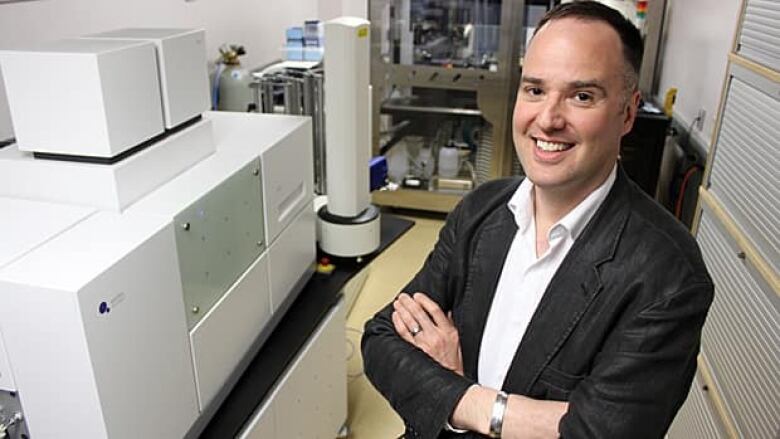McMaster researcher makes major Huntington's breakthrough
Discovery means faster results in developing new medications

It's being heralded as one of the biggest discoveries in Huntington's disease research in years, and a McMaster University researcher is behind it.
Professor Ray Truant has solved a long-standing mystery in fighting the diseasethe ability to examine how cells change shape in human Huntington's patients.
The discovery revolves around the huntingtin protein, said Truant. In patients with Huntington's disease, there's "a little piece of gene where the DNA is longer than it should be," and it changes shape, he said.
But when researchers tried to recreate that "shape-shifting" dynamic in mice, it was inconsistent, he said. That made it difficult to test and develop new drugs.
With Truant's discovery, published Monday in theProceedings of the National Academy of Sciences, researchers can now look directly at the cells of living patients and see how the protein is folded, he said. That bypasses the need for mouse trials, and means much faster results.
"We can see if it folded back without having to wait years to see if it actually affected the disease," he said.
Huntington's is a brain disease that affects about one in 7,000 people. It causes an increased loss of brain cells at the centre of the brain, leading to physical deterioration and eventually death.
There was a major Huntington's breakthrough in 1993, when scientists learned to clone the gene.
Bev Heim Myers, CEO of the Kitchener-based Huntington Society of Canada, says Truant's discovery is likely the biggest breakthrough since then.
"This was a critical piece of information that was missing, and now we have it," she said.
The research is special for another reasonit was done in part with money raised by Huntington Society volunteers across the country, Truant said.
He used McMaster's new $11-million microscopy centre, implemented in 2006. And he got funding from the Canadian Institutes of Health Research and the Toronto-based Krembil Foundation.
Volunteers raised research money
But the society helped fund the critical early stage. It holds small fundraisers and mail campaigns to raise about $1 million for research a year. It chooses its projects wisely, Heim Myers said.
"We're small but mighty."
Truant's discovery will be key to future researchers looking for new drug treatments. There are eight other neurodegenerative diseases with similar DNA defects as Huntington's. Truant will study how his finding applies to those diseases too.
Truant and his team also contribute tohdbuzz.net, a website that translates research articles in plain language. It's important that people impacted by the disease understand, he said.
He also pairs graduate students in his lab with families impacted by Huntington's disease. That familiarity increases the team's passion for their work, he said.
"Once they start interacting with these patients, they get super motivated," he said. "If you come to my lab on a Saturday or Sunday evening, there's always someone here."
Other McMaster research stories:












_(720p).jpg)


 OFFICIAL HD MUSIC VIDEO.jpg)
.jpg)



























































































